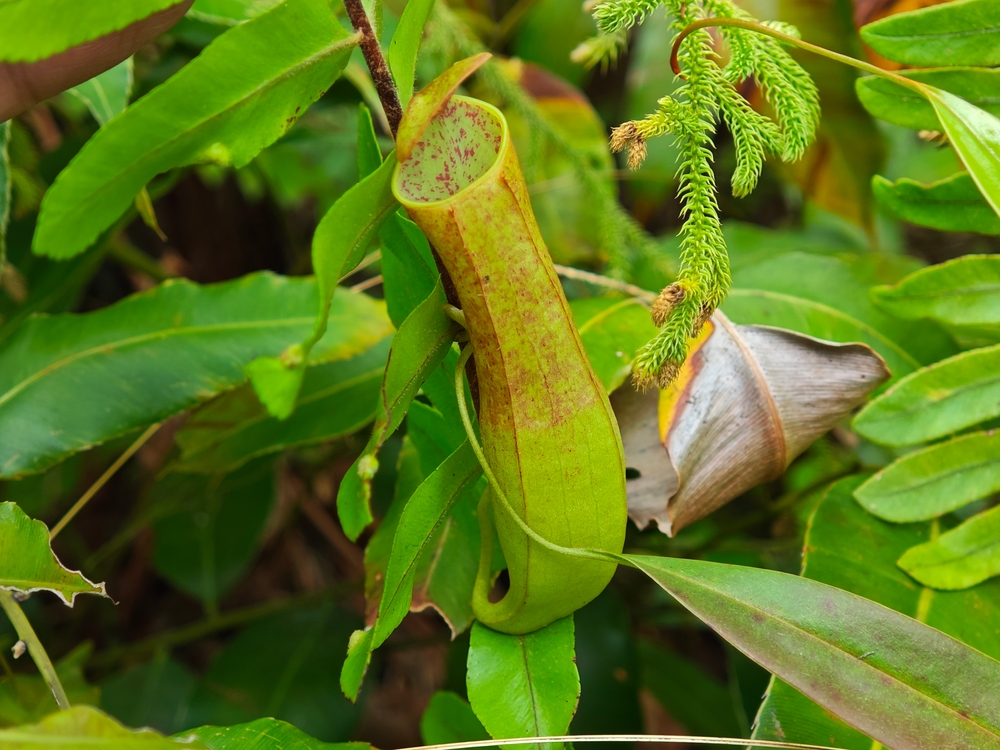The ocean’s depths are home to some of the most fascinating creatures on Earth, many of which possess the incredible ability to glow in the dark. This natural bioluminescence is used for a variety of purposes, from attracting prey to communicating with mates or even evading predators. These glowing displays create an eerie and mesmerizing spectacle in the dark waters, showcasing the ocean’s mysterious beauty. Each of these marine animals has evolved to harness light in unique ways, making them extraordinary examples of nature’s ingenuity. Their glowing abilities are not only captivating but also essential for survival in their deep-sea environments.
Anglerfish
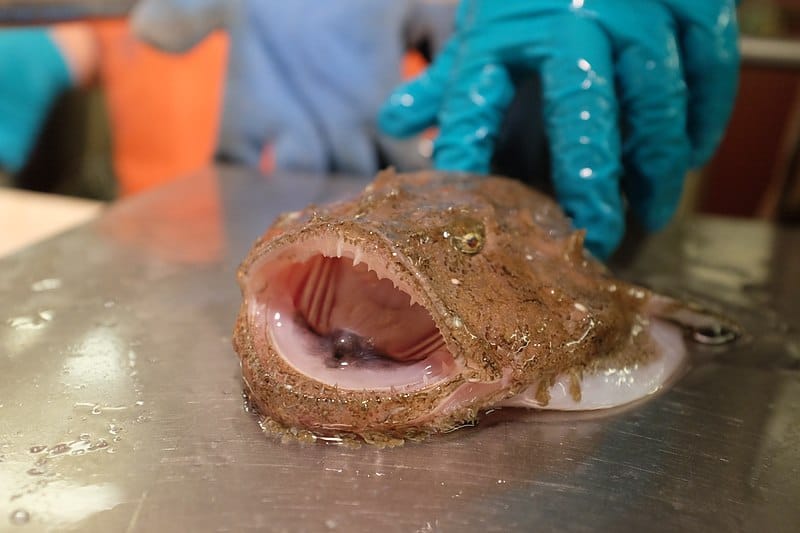
Deep within the ocean’s abyss, the anglerfish uses its glowing lure to attract prey. This bioluminescent appendage extends from its head, shimmering in dark waters to deceive smaller fish. Its glow is a perfect adaptation to the pitch-black environments it inhabits. The anglerfish’s fierce jaws snap shut when an unsuspecting fish gets too close, turning the hunter into prey. Found in the depths of the Atlantic and Antarctic oceans, this species thrives in some of the most hostile conditions on Earth. Its eerie glow is both a survival mechanism and a mesmerizing natural wonder.
Atolla Jellyfish

Known as the “alarm jellyfish,” the Atolla jellyfish emits bright flashes of blue light when threatened. Its glowing display serves to confuse predators, giving it a chance to escape. Residing in the deep sea, this jellyfish’s light is a beacon of beauty in an otherwise dark world. The rapid, pulsating lights can reach up to several meters, resembling an underwater firework show. Often spotted by deep-sea explorers, the Atolla jellyfish is a stunning example of nature’s defense mechanisms. Its bioluminescent glow is as captivating as it is effective.
Lanternfish
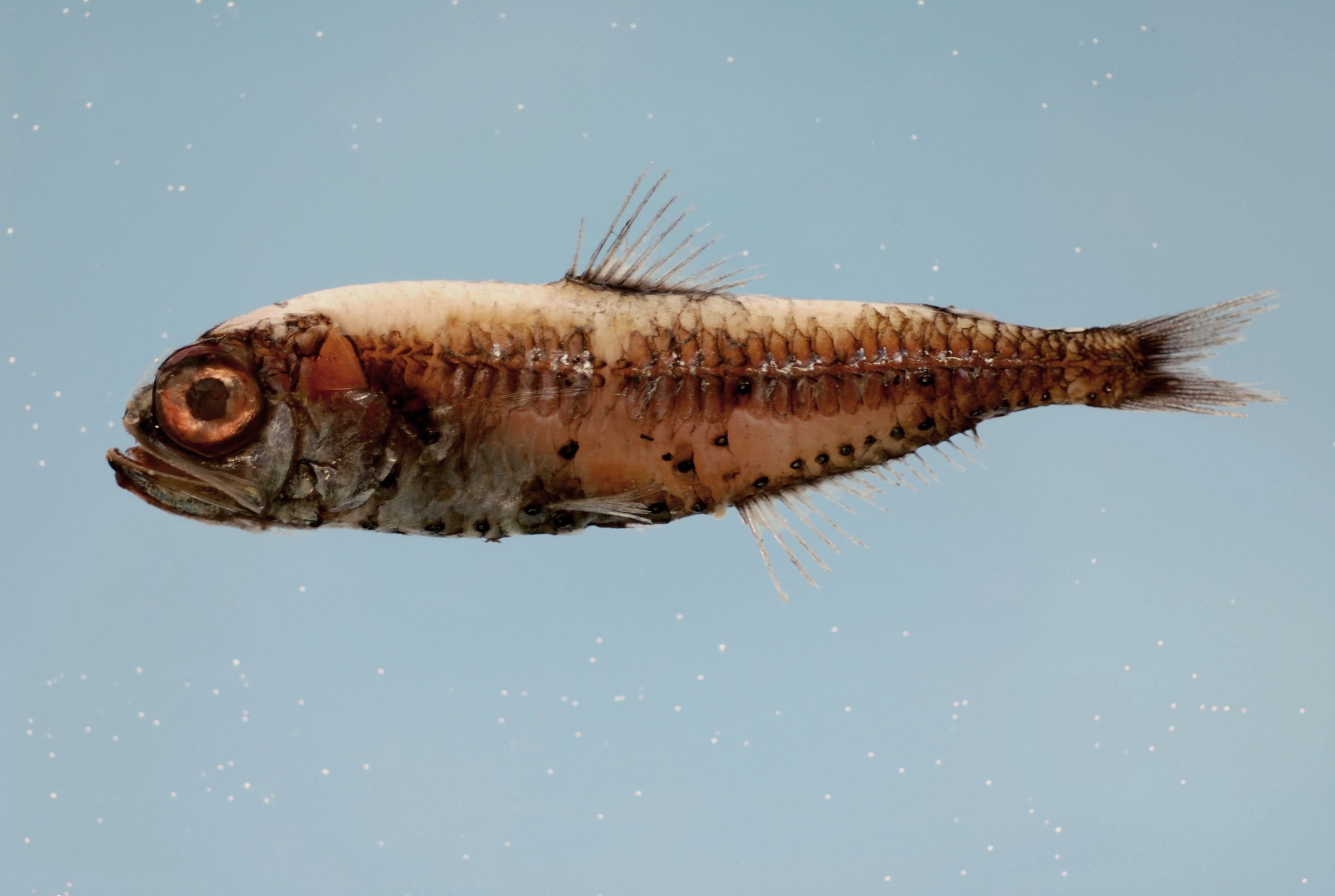
Lanternfish get their name from the small light-producing organs scattered across their bodies. These organs, called photophores, allow the lanternfish to emit light in rhythmic patterns. Often seen in schools, their glow helps them communicate and evade predators in the ocean’s twilight zone. By matching the light coming from above, they blend into their surroundings, becoming nearly invisible. This adaptive glow makes the lanternfish one of the most successful species in the deep sea. Their shimmering bodies create an ethereal sight in the vast, dark waters.
Vampire Squid
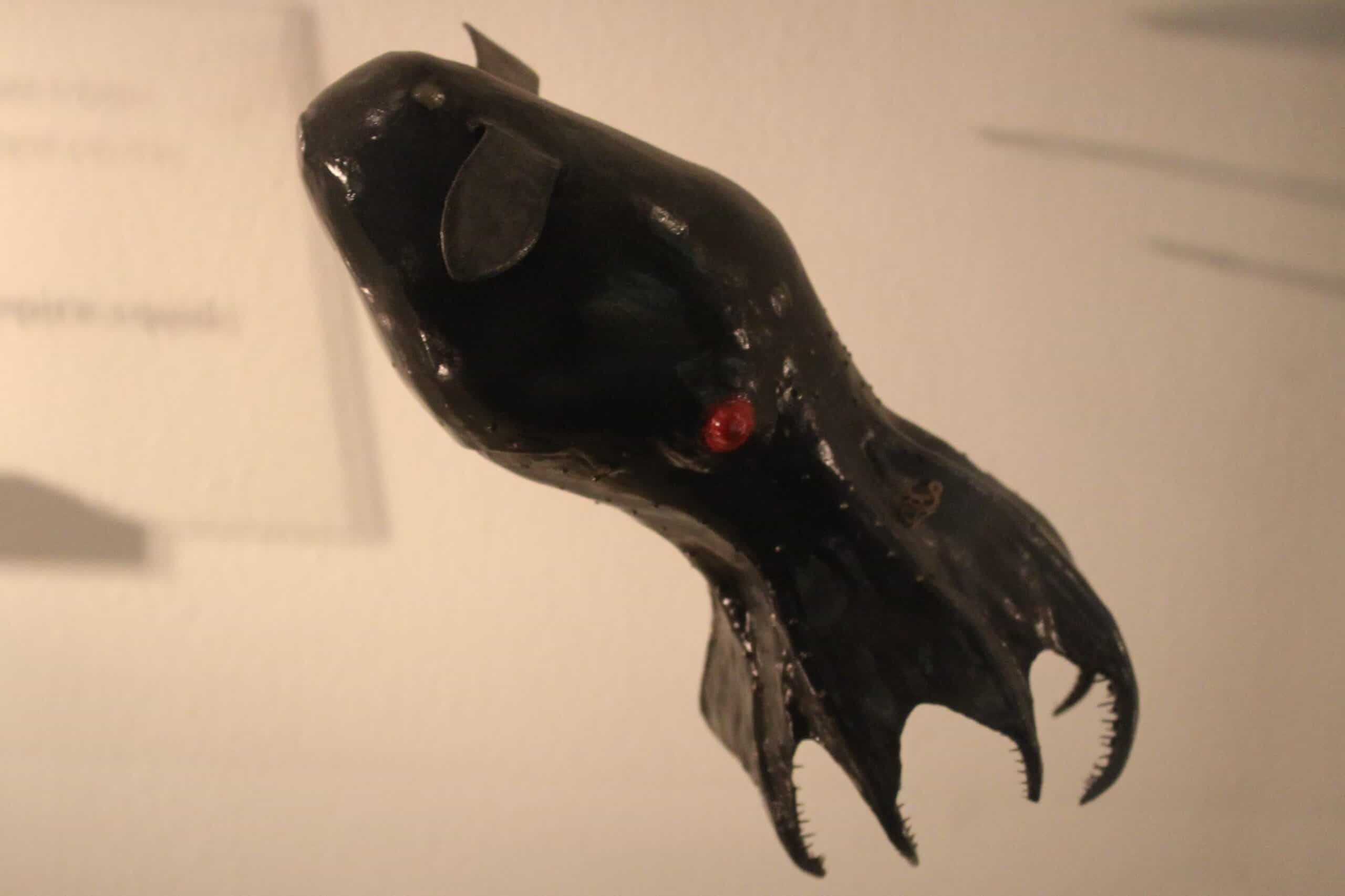
The vampire squid’s name might sound terrifying, but its glowing abilities are truly magical. Found in deep ocean habitats, it uses bioluminescence to ward off predators by releasing a cloud of glowing mucus. This light show distracts and confuses threats while the squid swiftly makes its escape. Unlike other squid species, it doesn’t squirt ink but instead creates glowing orbs that leave predators disoriented. Its bioluminescence isn’t just defensive—it also adds to the mysterious allure of this deep-sea dweller. The vampire squid’s otherworldly glow is as mysterious as its name.
Comb Jelly
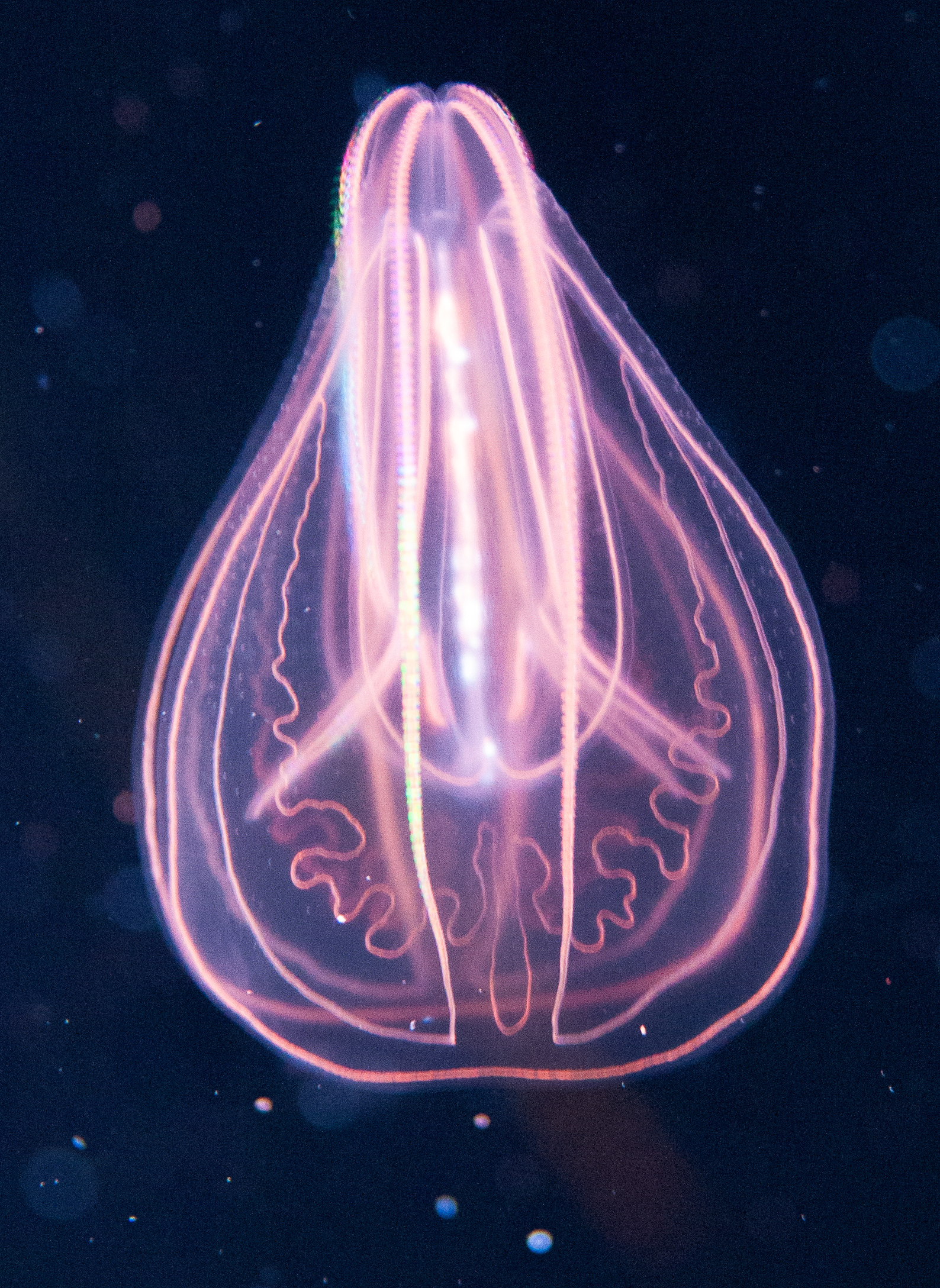
Comb jellies are known for their mesmerizing rainbow-like glow, produced not by bioluminescence, but by light scattering through their cilia. These cilia beat in waves, creating a shimmering display of multicolored light in the dark ocean waters. In addition to this natural light show, many species of comb jellies also produce bioluminescence, adding a bluish glow to their colorful display. Found near the surface of the sea, their glowing beauty often leaves divers in awe. Their translucent bodies add to the illusion, making them look like glowing ghosts of the sea. They are both elegant and hypnotic as they drift through the water.
Firefly Squid
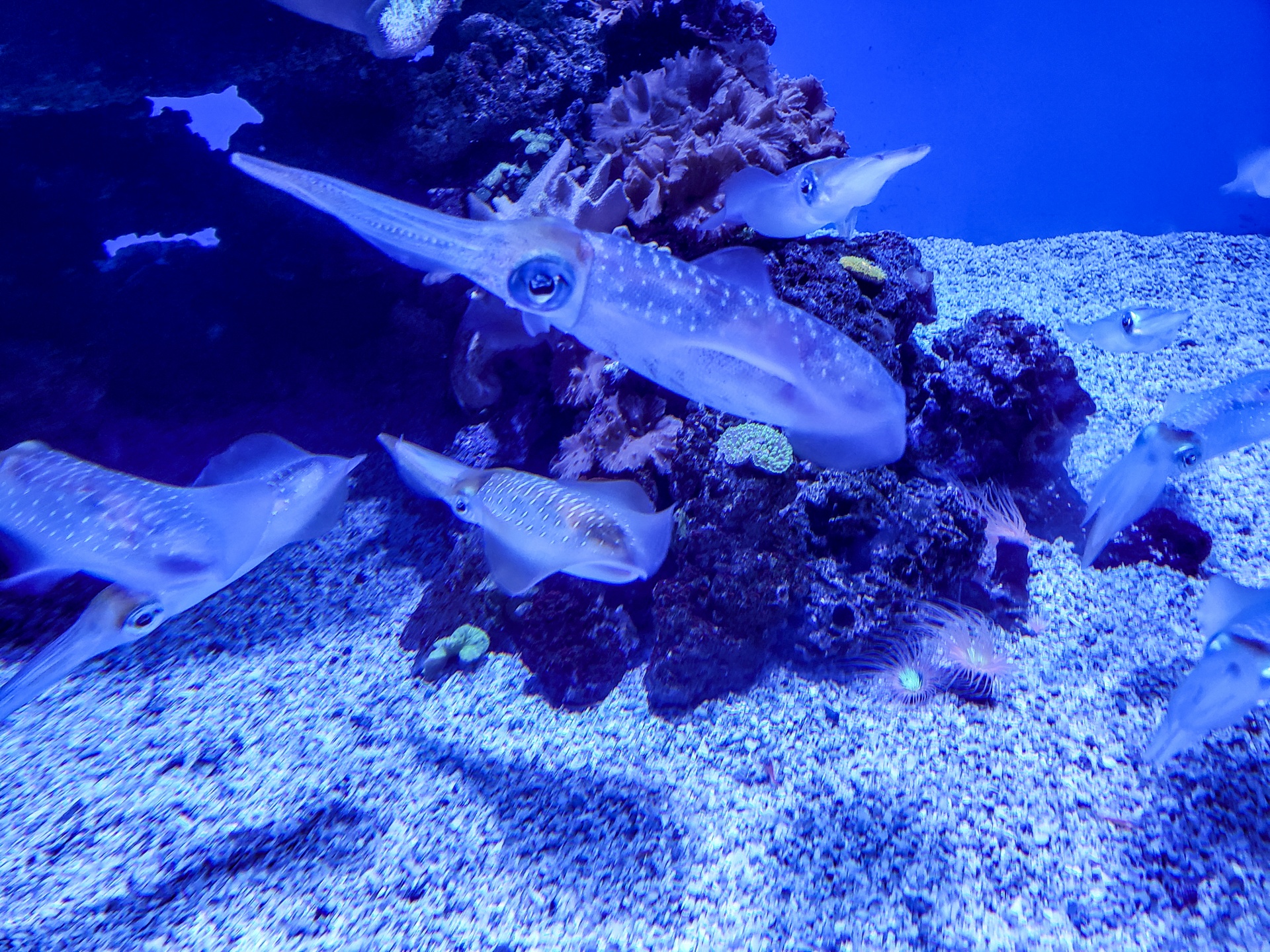
A true spectacle of the sea, the firefly squid lights up the coasts of Japan every spring. It uses tiny light-producing organs on its tentacles to create a blue glow that attracts mates and prey. During mating season, these squids gather in massive groups, illuminating the waters with a breathtaking bioluminescent glow. The synchronized lights are a visual treat, earning them the name “firefly” squid. While their glowing displays are beautiful, they also serve a practical purpose, helping the squid navigate and survive in the ocean’s depths. The glowing spectacle has even become a tourist attraction in Japan.
Crystal Jelly
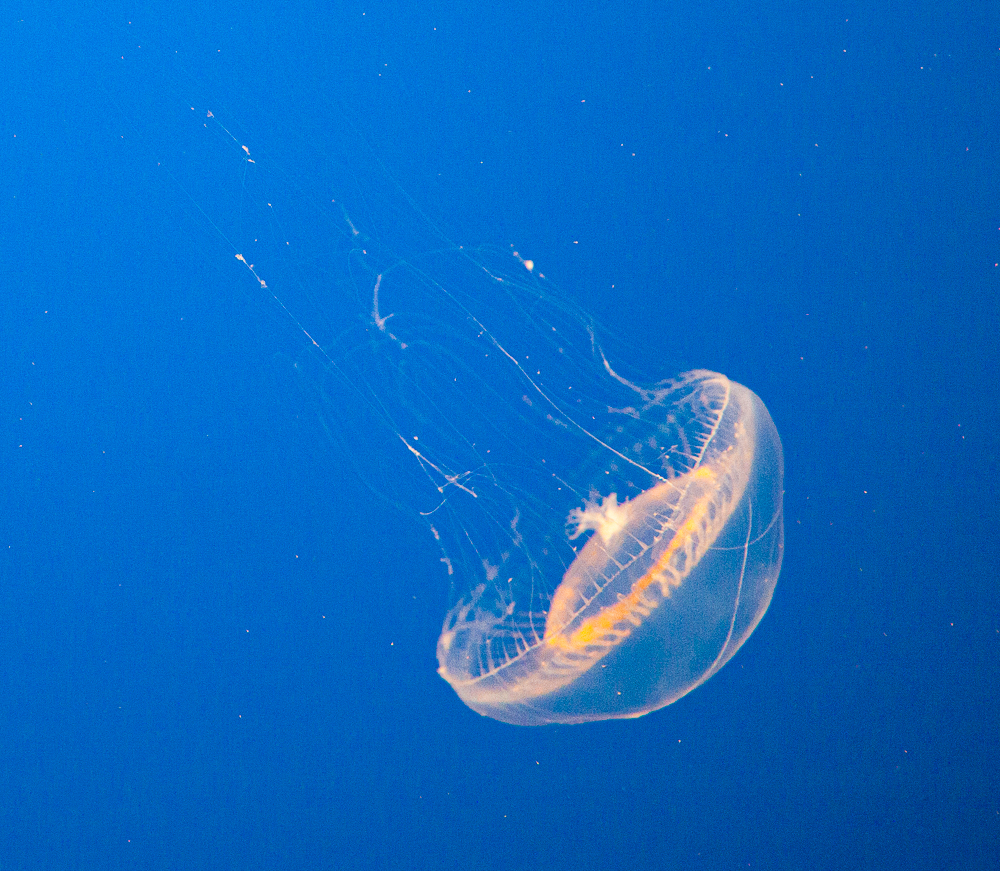
With its transparent body and glowing ring of tentacles, the crystal jelly looks like something from another planet. This jellyfish is notable for its green bioluminescence, which comes from specialized proteins called GFP (green fluorescent proteins). These proteins have made the crystal jelly famous in scientific research, but in the wild, its glow helps deter predators. Found in the waters off North America’s west coast, it is both fragile and captivating. Its delicate, pulsating body lights up the deep sea, making it a true luminary of the ocean. The crystal jelly’s glow is both a visual marvel and a scientific treasure.
Cookiecutter Shark
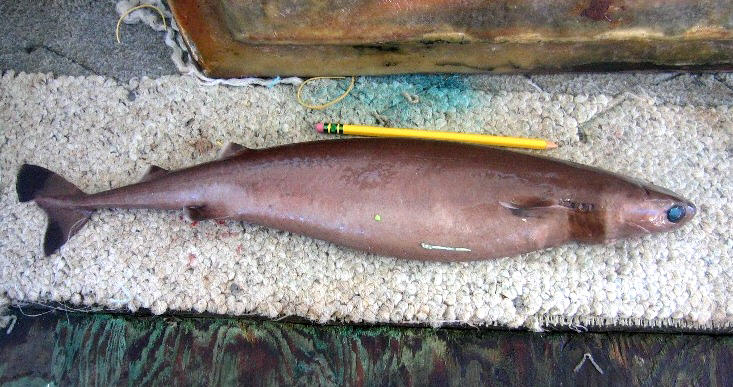
Despite its small size, the cookiecutter shark is a fearsome predator, using its glowing underside to deceive larger prey. The bioluminescence on its belly makes it blend into the faint light above, allowing it to ambush its prey with stealth. Found in tropical waters, this shark uses its light not only for hunting but also as camouflage. Its name comes from the circular bite marks it leaves on its victims, which are as notorious as its glowing belly. This shark’s clever use of light is an excellent example of nature’s ingenuity. The cookiecutter shark’s glow is both a hunting tool and a survival tactic.
Siphonophores
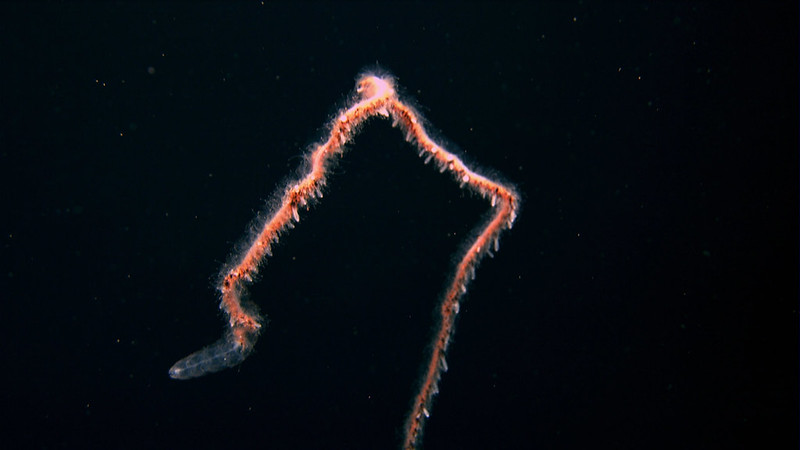
Siphonophores, like the famous Portuguese Man o’ War, are not individual animals but colonies of specialized organisms working together. These deep-sea creatures can glow with a faint blue or green light, a characteristic that helps them in both defense and communication. Their bioluminescence can extend for several meters, creating a glowing web in the dark waters. As they drift through the sea, they leave behind an enchanting trail of light. This glowing behavior attracts prey and warns off predators, making them both alluring and deadly. The siphonophore’s glow is a hauntingly beautiful feature of deep-sea life.
Bristlemouth Fish
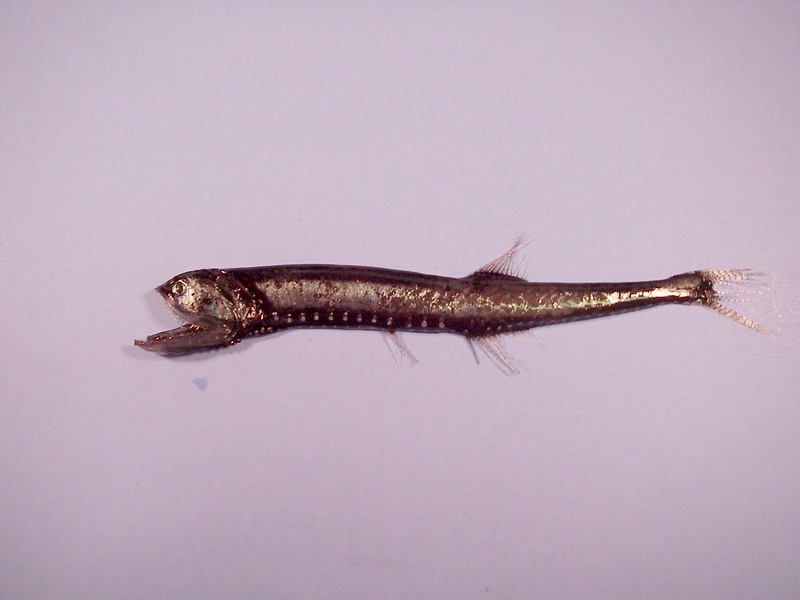
The bristlemouth fish might be small, but it has one of the largest populations in the world’s oceans. Their bioluminescent ability is essential for communication and finding mates in the dark ocean depths. Tiny light-producing organs line their bellies, emitting a soft blue-green glow. This light helps the fish blend in with the ocean’s surface, hiding them from predators lurking below. Their glowing behavior is a marvel of deep-sea adaptation, ensuring their survival in one of the world’s harshest environments. Bristlemouth fish may be small, but their glow makes them hard to overlook.
Fangtooth Fish
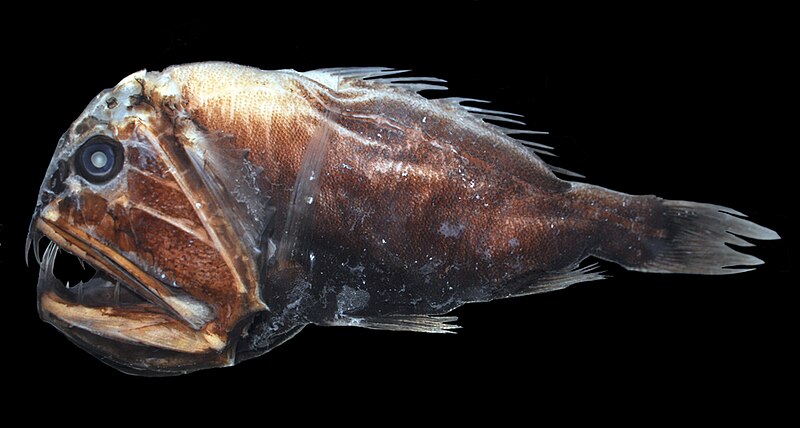
Residing in the deep sea, the fangtooth fish has developed a glowing ability to navigate the pitch-black waters. While its bioluminescence is not as pronounced as other species, its faint glow helps it detect prey and communicate with others of its kind. This eerie light gives the fangtooth fish a ghostly appearance as it glides through the water. The glow adds to its menacing look, complementing its large, sharp teeth. Although it is not a major predator, the fangtooth’s ability to light up its world is key to its survival. Its faint glow is a haunting presence in the deep.
Hawaiian Bobtail Squid
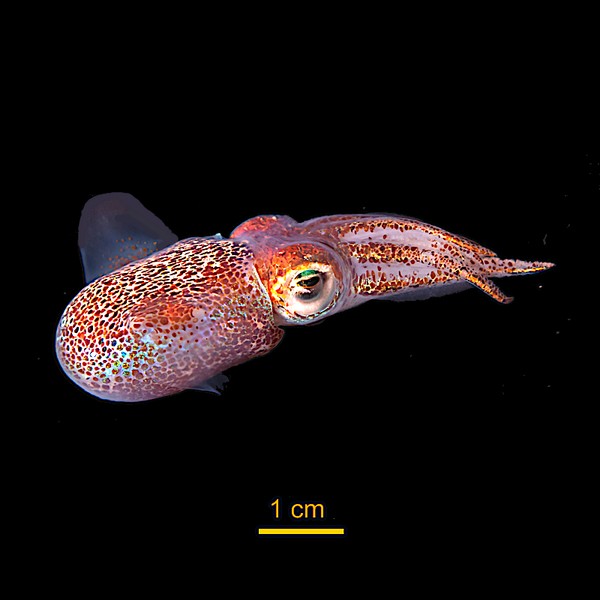
A master of camouflage, the Hawaiian bobtail squid uses bioluminescent bacteria to create a glow that helps it blend into moonlit waters. Its glowing underside mimics the light coming from the surface, making it invisible to predators below. This squid’s symbiotic relationship with the bacteria allows it to regulate its glow, depending on the environment. Found in the shallow waters around Hawaii, its glow serves both as protection and an attraction for potential mates. This small yet clever creature is a shining example of nature’s adaptability. The Hawaiian bobtail squid’s light is as fascinating as it is functional.
Glowing Sucker Octopus

Unlike most octopuses, the glowing sucker octopus has specialized suckers that emit a blue-green glow. This bioluminescence helps it navigate and communicate in the deep ocean, where light is scarce. The glowing suckers also serve as a form of camouflage, blending with the ambient light to hide from predators. Found at depths of over 700 meters, this octopus uses its glow to illuminate its surroundings, much like a built-in flashlight. Its unique glowing ability sets it apart from other octopus species, making it an extraordinary creature of the deep. The glowing sucker octopus is both intriguing and mesmerizing.
Pineapplefish
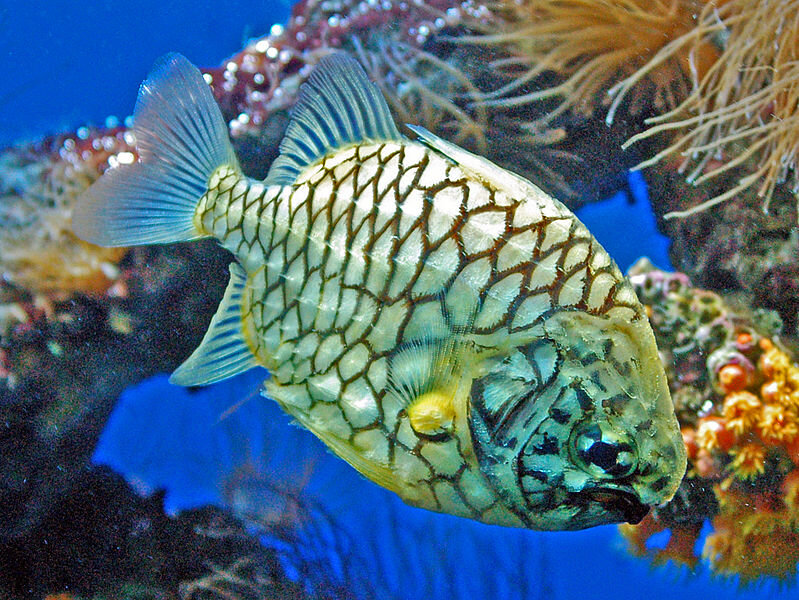
Named for its spiky, armor-like appearance, the pineapplefish uses bioluminescence to help it see in the dark. It has light organs near its mouth that glow, illuminating its path as it searches for food in the deep waters. This light allows the pineapplefish to navigate through coral reefs and rocky outcrops, even in total darkness. Its glow also serves to attract prey, drawing small fish into its waiting jaws. Found in the waters off Australia and Japan, this fish is both fierce and fascinating. The pineapplefish’s glow is as functional as it is captivating.
Pyrosome
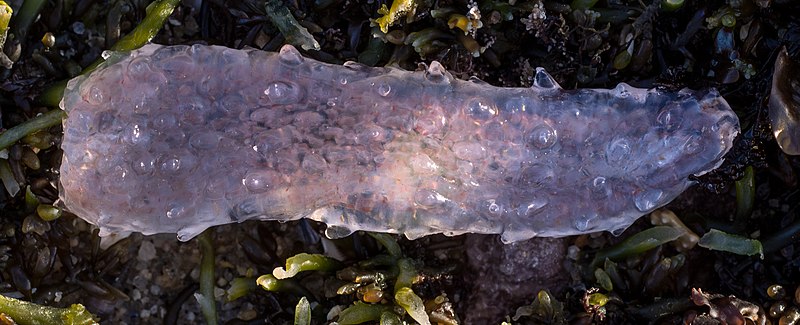
Pyrosomes are colonies of small sea creatures that together form a tube-like structure, which can grow up to several meters long. These creatures glow with an intense blue-green light, lighting up the ocean’s depths like a glowing tunnel. The entire colony pulsates with light, making it one of the most remarkable bioluminescent displays in the ocean. Pyrosomes are often called “sea pickles” because of their shape, but their glow is what truly sets them apart. Their glowing behavior is not just for show—it helps them deter predators and communicate. The pyrosome’s radiant light is a breathtaking spectacle of the deep sea.
Dinoflagellates

Though tiny, dinoflagellates are responsible for some of the most stunning bioluminescent displays in the ocean. These microscopic organisms glow when disturbed, creating a dazzling blue light that can be seen on the surface of the water. Often found in large blooms, they light up the sea in waves, especially when disturbed by boats or swimming animals. This glow is a defense mechanism, meant to startle predators. Dinoflagellates are responsible for the famous glowing beaches seen in places like Puerto Rico and the Maldives. Their collective glow is a natural wonder that draws people from all over the world.
Luminous Shrimp
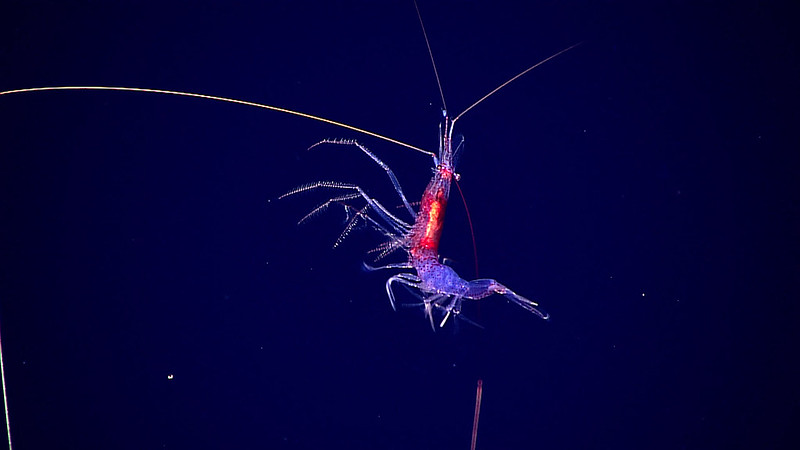
Luminous shrimp are small, deep-sea creatures that produce a bioluminescent glow from specialized glands. They use this light to escape predators by releasing a cloud of glowing particles, which confuses and distracts threats. Found in various oceanic depths, these shrimp can create an impressive light show with their glowing defense mechanism. The bioluminescence can also be used for communication, helping shrimp locate mates in the vast darkness of the deep sea. Their tiny size belies the brilliance of their glow, making them a fascinating example of underwater survival. The luminous shrimp’s glow is as functional as it is beautiful.
This article originally appeared on Rarest.org.
More From Rarest.Org
Throughout history, certain philosophical ideas have profoundly shaped how we think about the world, ourselves, and our place within it. These groundbreaking concepts challenge conventional beliefs, urging us to reconsider long-standing assumptions and offering fresh perspectives on ethics, existence, and society. Read more.
Mountains have long been symbols of awe and mystery, and some of the most remote ranges in the world take this to an entirely new level. These isolated landscapes, often far from human civilization, offer peaks that look and feel like they’re from another planet. Read more.
Carnivorous plants are some of the most fascinating species in the plant world, using unique adaptations to trap and digest insects and other small prey. Unfortunately, many of these incredible plants are now rare and endangered due to habitat loss, climate change, and human activities. Read more.



